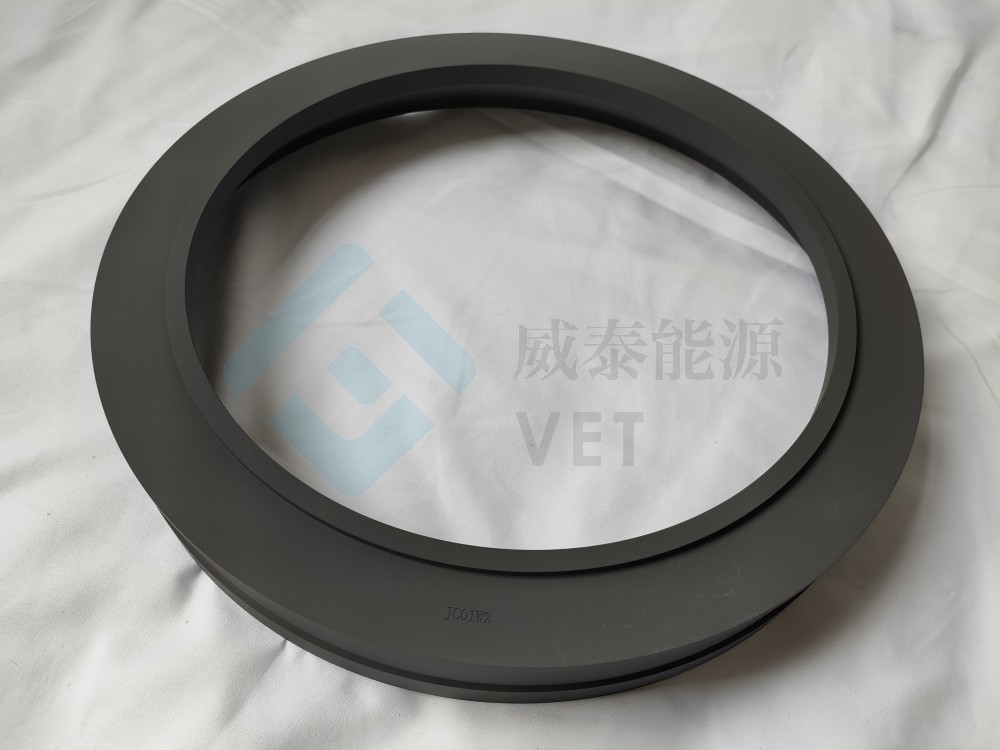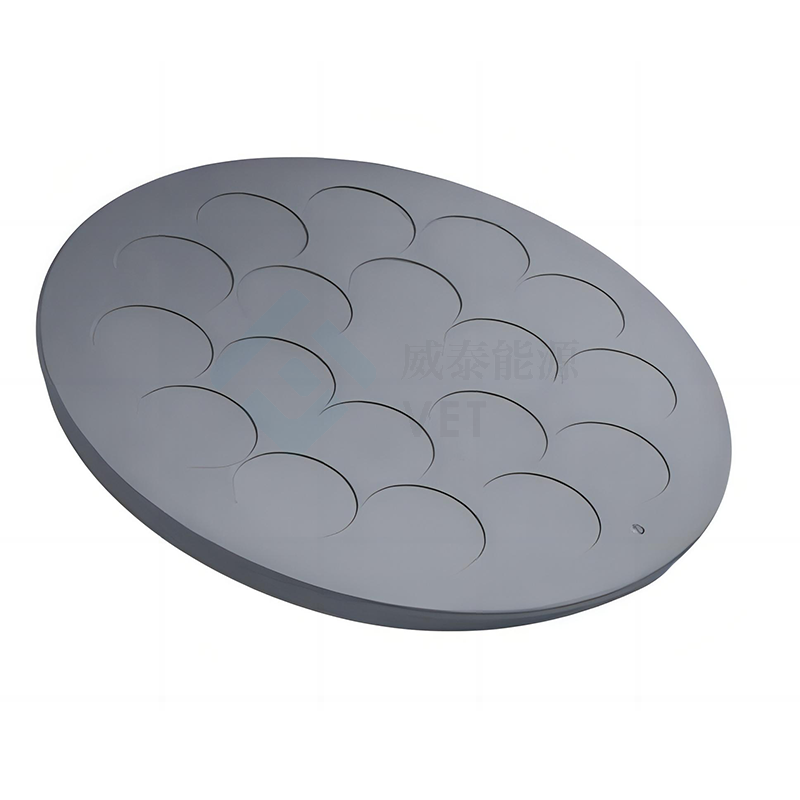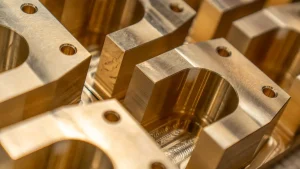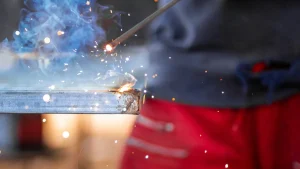シリコンカーバイド(SiC)コーティングは、極端な性能を必要とする業界において重要な役割を果たしています。 優れた熱安定性と硬度により、高強度の環境に最適です。 プロセスのような CVDコーティング 精密な適用を保障して下さい、物質的な特性を高めて下さい。 航空宇宙で, SiCコーティング 補完 TaCコーティング 要求する条件の下の信頼性を保障する熱および腐食から部品を保護するため.

要点
- SiCコーティングは1500°C上の非常に高い熱を、扱います。 航空宇宙や半導体用途に適している.
- SiCコーティングは非常に硬いので、摩耗に抵抗します。 これにより、修理費用が長持ちし、修理コストを削減できます.
- SiCコーティングは錆および化学害を止めます。 半導体ツールを清潔に保ち、航空宇宙部品がうまく機能します.
SiCコーティングの理解
SiCコーティングの主な特性
シリコンカーバイドコーティングは、高性能業界で欠かせない特性のユニークな組み合わせを展示しています。 優れた熱安定性により、1500°を超える温度に耐えることができます。 分解することなくC。 このプロパティは、航空宇宙推進システムなどの極端な熱を伴うアプリケーションにとって重要です. SiCコーティング また、モーススケールのダイヤモンドに近い、驚くべき硬度を有します。 この硬度は摩耗抵抗を高めます、研摩の環境の長寿を保障します。 また、その化学的不活性は、腐食から部品を保護し、高い反応性や酸化条件でも保護します。 これらのコーティングはまた熱放散で助ける優秀な熱伝導性および低い熱拡張を、熱応力の下で割れる危険を減らします示します.
SiCコーティング用製造工程
SiCのコーティングの生産は精密および性能を保障するために先端技術を含んでいます。 化学蒸気蒸着(CVD)は最も広く使用されている方法です。 高温での気体前駆体を反応させることで、シリコンカーバイドの薄く均一な層を基質に堆積させます。 CVDはコーティングの厚さおよび純度上の優秀な制御を可能にします。 別の方法、物理的な蒸気の沈殿(PVD)はスパッタリングのような物理的なプロセスを通してSiCを沈殿物に真空の環境を使用します。 溶射は、表面に溶融したSiC粒子を溶かした濃厚コーティングにも採用されています。 各方法は特定の適用、費用、コーティングの厚さおよび性能の条件のようなバランスをとる要因に合います.
SiCコーティングが現代の産業に不可欠である理由
SiCコーティングは、耐久性、精度、信頼性を要求する業界の重要な課題に対処します。 大気空間では、それらは極度な熱および酸化から部品を保護し、安全で、有効な操作を保障します。 半導体分野では、ウェーハ処理環境の純度を維持し、デバイス性能を損なう汚染を防ぎます。 コンポーネントの寿命を延ばす能力は、メンテナンスコストとダウンタイムを削減し、コスト効率の高いソリューションを実現します。 業界が技術の境界線をプッシュするにつれて、SiCコーティングの役割は拡大し続け、高温および高ストレスアプリケーションでの進歩を可能にします.
航空宇宙用途におけるSiCコーティング
高温部品に対する熱保護
大気空間システムは、特に再入力または推進中に極端な熱環境で動作します。 SiCのコーティングはこれらの条件に露出される部品のための強い熱障壁を提供します。 1,500°を超える温度に耐える能力 C はタービン ブレードおよびロケット ノズルのような重要な部品が、強い熱の下で機能残っていることを保障します。 この熱安定性は材料の劣化を最小限にし、高強度の動作中に故障のリスクを低減します。 効率的に熱を散らすことにより、SiCコーティングは、コンポーネントの構造的完全性を維持し、運用寿命を延ばします.
耐久性および耐食性を高めて下さい
大気空間の部品は酸化、湿気および腐食性の化学薬品を含む粗い条件への一定した露出に直面します。 SiCコーティングは保護シールドとして機能し、腐食および摩耗を防ぎます。 その優れた硬度は、飛行中に遭遇する塵や破片などの高速粒子から摩耗に抵抗します。 この耐久性は維持の条件を減らし、時間の上の一貫した性能を保障します。 また、SiCコーティングの化学的不活性は、推進システムや外空間に見られるような反応環境からコンポーネントを保護します.
宇宙船および航空機システムの適用
SiCコーティングは、宇宙船と航空機システムの両方において重要な役割を果たしています。 宇宙船では、熱シールド、スラスター、および極端な熱および機械的ストレスから他の重要なコンポーネントを保護します。 航空機用、SiCコーティングは、室内燃焼や排気系などのエンジン部品の性能を向上し、熱や摩耗に対する耐性を高めています。 耐久性を損なうことなく軽量材の使用を可能にし、軽量化に貢献します。 航空宇宙技術の進歩として、SiCのコーティングは、より高い効率と信頼性を達成するために不可欠です.
半導体用途におけるSiCコーティング

ウェーハ加工・装置の役割
SiCコーティングは半導体製造装置の性能および長寿を高めることによってウエハの処理で重要な役割を担います。 ウエファーの製作は保護されていない表面を劣化させることができる高温および反応化学薬品を、含んでいます。 SiCコーティングは化学腐食および熱損傷に抵抗する強い障壁を提供します。 ウェーハキャリアやエッチングチャンバーなどの重要なコンポーネントの摩耗を最小限に抑え、製造中に一貫した精度を保証します。 設備の整合性を維持することにより、SiCコーティングはダウンタイムと運用コストを削減し、半導体製造に不可欠です.
グラファイト部品の保護と純度の確保
グラファイトコンポーネントは、熱安定性と軽量特性により、半導体プロセスで広く使用されています。 しかし、グラファイトは、極端な条件下で酸化および汚染につながります。 SiCコーティングは、酸化および化学反応を防ぐ保護層を形成することによって、これらの課題に対処します。 このコーティングは、デバイスの性能を損なう可能性がある半導体アプリケーションに不可欠である高純度の高レベルを保証します。 グラファイトコンポーネントを保護することで、SiCコーティングは信頼性を高め、重要なツールの寿命を延ばします.
LEDおよび半導体製造の適用
SiCコーティングは、LEDや先進半導体の製造に不可欠です。 LED製造では、それらは腐食性のガスおよび高温からの原子炉そして沈殿の部屋を保護します。 この保護はLEDのウエファーの均等性そして質を保障します。 同様に、半導体製造では、SiCコーティングは、清潔で安定した環境を維持することにより、精密な蒸着プロセスを可能にします。 過酷な条件に耐える能力は、マイクロチップやパワーエレクトロニクスなどの最先端機器の生産をサポートしています.
航空宇宙・半導体の比較 SiCコーティングの使用
業界全体で共有されたメリット
SiCのコーティングは大気および宇宙空間および半導体の企業に重要な利点を提供します。 その例外的な熱安定性は高温環境の信頼できる性能を保障します。 このプロパティは、航空宇宙推進システムおよび半導体ウェーハ処理装置に不可欠です。 コーティングの硬度は摩耗の抵抗を高めます、研摩の条件に従う部品の寿命を拡張します。 また、その化学的不活性は、空間の酸化雰囲気や半導体製造の反応環境でも、腐食から表面を保護します。 これらは、メンテナンスコストを削減し、運用効率を改善し、SiCコーティングは両方の分野で貴重な資産をコーティングします.
応用技術と要件の違い
両業界はSiCコーティングに依存していますが、その応用技術と要件は異なります。 航空宇宙アプリケーションは、極端な熱と機械的ストレスに耐えるために、より厚いコーティングを要求します。 熱噴霧のような方法は、これを達成するために一般的に使用されます。 つまり、半導体製造は精密・純度を優先します。 化学蒸気蒸着(CVD)による薄く均一なコーティングは、クリーンな処理環境を維持するために不可欠です。 また、航空宇宙部品は、温度と機械的負荷の変動に耐える必要があります。半導体ツールは、化学エッチングや汚染に対する耐性を必要とします。 これらは、各業界に適したコーティングプロセスの開発を推進しています.
SiCコーティング技術のチャレンジとイノベーション
その利点にもかかわらず、SiCコーティングは課題に直面しています。 複雑な幾何学上の均一なコーティングを実現することは、特に航空宇宙部品にとって困難です。 半導体アプリケーションでは、蒸着中に超高純度を維持することは極めて重要ですが、困難です。 未来のイノベーションは、これらの課題に取り組むことを目指しています。 原子層の沈着(ALD)のような高度の沈着の技術は、大きい精密を約束し、制御します。 研究者は、SiCを他の材料と組み合わせて性能を向上させるハイブリッドコーティングも検討しています。 技術の進化に伴い、両業界におけるSiCコーティングの可能性を広げていきます.
シリコンカーバイドコーティングは、重要な課題を解決し、最先端の進歩を可能にすることにより、航空宇宙および半導体業界に革命をもたらします。 比類のない熱安定性、硬度、耐薬品性は、高性能な用途に不可欠です。 技術の進歩として、SiCのコーティングは、これらの要求の厳しいセクターを渡る革新、運転の効率および信頼性の礎石を残します.
製品の詳細については、下記までお問い合わせください。 steven@china-vet.com またはウェブサイト: www.vet-china.com.






